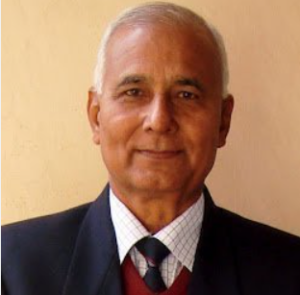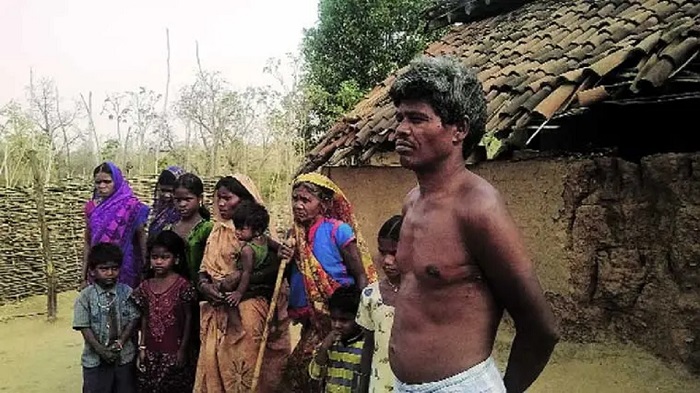SR Darapuri, National President, All India Peoples Front

(Asian independent) The socio-economic status of Dalits in India reflects a complex interplay of historical marginalization, persistent discrimination, and gradual progress through policy interventions. Dalits, historically labelled as “untouchables” and now officially recognized as Scheduled Castes (SCs), constitute about 16.6% of India’s population (approximately 200 million people as per the 2011 Census). Despite constitutional protections and affirmative action, they remain one of the most disadvantaged groups in terms of economic opportunity, education, and social mobility.
Current Socio-Economic Status
- Economic Conditions:
– Poverty: Around one-third of Dalits (approximately 100 million) live in multidimensional poverty, according to the 2021 Global Multidimensional Poverty Index. In rural areas, 33.8% of SC households were below the poverty line in 2011-12, compared to 21.8% in urban areas. This is significantly higher than the national average.
– Employment: Over 90% of Dalits in rural areas work as unskilled labourers or marginal farmers, often in agriculture or informal sectors. Only 18% of Dalit households have access to formal credit (Reserve Bank of India, 2018), limiting entrepreneurial opportunities. Land ownership is minimal, with just 2.2% of Dalits owning land compared to a national average of 17.9%, perpetuating economic dependence.
– Income Disparity: The average wage for Dalit workers is 17% lower than for non-Dalit workers (National Sample Survey Office, 2012), reflecting occupational segregation and discrimination.
- Education:
– Literacy: The literacy rate among Dalits is 73.5%, below the national average of 80.9% (Census of India, 2020). Historical exclusion from education and ongoing discrimination in schools contribute to this gap.
– Access: While primary school enrolment has improved, dropout rates remain high due to poverty, caste-based prejudice, and lack of infrastructure in rural areas. Higher education attendance for Dalits rose from 8% in 2004-05 to 15% in 2011-12, but it still lags behind upper castes.
- Social Standing:
– Discrimination: Despite legal bans on untouchability (Article 17 of the Indian Constitution), caste-based discrimination persists, especially in rural areas where 80% of Dalits reside. Practices like restricted access to water sources, temples, and public spaces continue.
– Violence: The National Crime Records Bureau (2020) reported 50,291 crimes against SCs, including assault, rape, and murder, underscoring their vulnerability.
- Political Representation:
– Dalits have 84 reserved seats in the Lok Sabha and benefits from job and education quotas. However, political influence often remains symbolic, with limited trickle-down effects to the broader community.
Ways to Improve Socio-Economic Status
Improving the socio-economic status of Dalits requires a multi-pronged approach addressing structural inequalities, economic empowerment, and social integration. Here are evidence-based strategies:
- Economic Empowerment:
– Land Reforms: Redistributing land to landless Dalit families could break the cycle of poverty. Historical land reform attempts (e.g., post-independence efforts) bypassed Dalits; a renewed focus on implementation is critical.
– Access to Credit: Expanding microfinance and formal banking access (beyond the current 18%) would enable entrepreneurship. Programs like the Dalit Indian Chamber of Commerce and Industry (DICCI) show promise in fostering Dalit business leaders.
– Job Creation: Extending reservations to the private sector, which dominates India’s economy, could diversify employment opportunities. Currently, quotas apply only to public sector jobs, benefiting just 5% of the Dalit workforce.
- Education Reform:
– Quality and Access: Building more schools in Dalit-dominated areas and ensuring teacher accountability could boost literacy and retention. Scholarships and free resources (e.g., the Rs 1 crore scholarship cited in a 2023 X post) should be scaled up.
– Awareness Campaigns: Integrating anti-caste education into school curricula could reduce prejudice from an early age, addressing the cultural roots of discrimination.
- Social Inclusion:
– Enforcement of Laws: Strengthening the implementation of the Scheduled Castes and Scheduled Tribes (Prevention of Atrocities) Act, 1989, with stricter penalties and faster judicial processes, could deter violence and discrimination.
– Community Programs: Promoting inter-caste interactions through public initiatives (e.g., shared community spaces) could erode social barriers over time.
- Political and Legal Measures:
– Empowering Institutions: Enhancing the authority of the National Commission for Scheduled Castes to directly penalize offenders would improve accountability.
– Grassroots Mobilization: Encouraging Dalit-led movements to unify at a national level could amplify their political voice, building on successes like Mayawati’s leadership in Uttar Pradesh.
- Technology and Innovation:
– Leveraging digital platforms for skill training and job opportunities could bridge urban-rural divides. The rise in mobile phone ownership among Dalits (66.64% as per SECC 2011) offers a pathway for outreach.
Conclusion
While Dalits have made strides—seen in rising literacy, political representation, and pockets of affluence—their socio-economic status remains disproportionately low due to entrenched caste dynamics and economic exclusion. Improvement hinges on targeted policies that go beyond symbolic gestures, tackling root causes like landlessness, educational inequity, and social stigma. A combination of state action, community initiative, and societal mindset shifts is essential to ensure sustainable progress.
Courtesy: Grok.com








